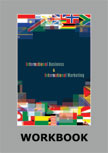Wind Energy Industry in the US and Canada: A Note on the Regulatory
Environment




|
|
ICMR HOME | Case Studies Collection
Case Details:
Case Code : BENV007
Case Length : 08 Pages
Period : 2003-2006
Pub Date : 2006
Teaching Note :Not Available
Organization : Microsoft
Industry : Alternative Energy
Countries : USA, Canada
To download Wind Energy Industry in the US and Canada: A Note on the
Regulatory Environment case study
(Case Code: BENV007) click on the button below, and select the case from the list of available cases:

Price:
For delivery in electronic format: Rs. 300;
For delivery through courier (within India): Rs. 300 + Rs. 25 for Shipping & Handling Charges
»
Business Environment Case Studies
»
Business Environment Short Case Studies
» View Detailed Pricing Info
» How To Order This Case
» Business Case Studies
Please note:
This case study was compiled from published sources, and is intended to be used as a basis for class discussion. It is not intended to illustrate either effective or ineffective handling of a management situation. Nor is it a primary information source.
|
|
<< Previous
Introduction Contd...
|
As of 2005, 13 billion cubic feet of natural gas was consumed daily for power
generation in the US. Despite the increase in demand for natural gas, the number
of drilling rigs has not increased proportionately. It is expected that natural
gas shortage is going to get more severe in the near future in North America.
This has made the mainstream power suppliers realize the need to have a balanced
mix of energy sources in their portfolio to meet the growing demand.
Development of wind energy helps in gaining self sufficiency in power
generation, supplying it at a stable cost, and decreasing GHG emissions. The
wind energy industry in the US and Canada is still at the growing stage.
|
|
Hence, electricity generated from wind energy is costly compared to fossil
fuel based power. The governments in the US and Canada are promoting wind
energy generation by framing favorable regulations. The growing view among
consumers, for the need to reduce environmental pollution, has helped
popularize alternative energy sources like wind energy. Thus, governmental
and public initiatives can together bring down the overall cost of wind
energy.
|
|
Wind Energy Generation in the Us and Canada
At the global level, the US and Canada occupy the second position behind
Europe, in terms of both fossil fuel based power generation and wind
energy generation. In 2004, the US and Canada together generated 4,718
terawatt hours4 (tWh) of fossil fuel based power, as compared to 4,644
tWh generated in 2003. On the contrary wind power generation capacity in
2004 was 7,184 megawatts5 (MW),
which increased to 9,832 MW in 2005. |
Excerpts >>
|
|



